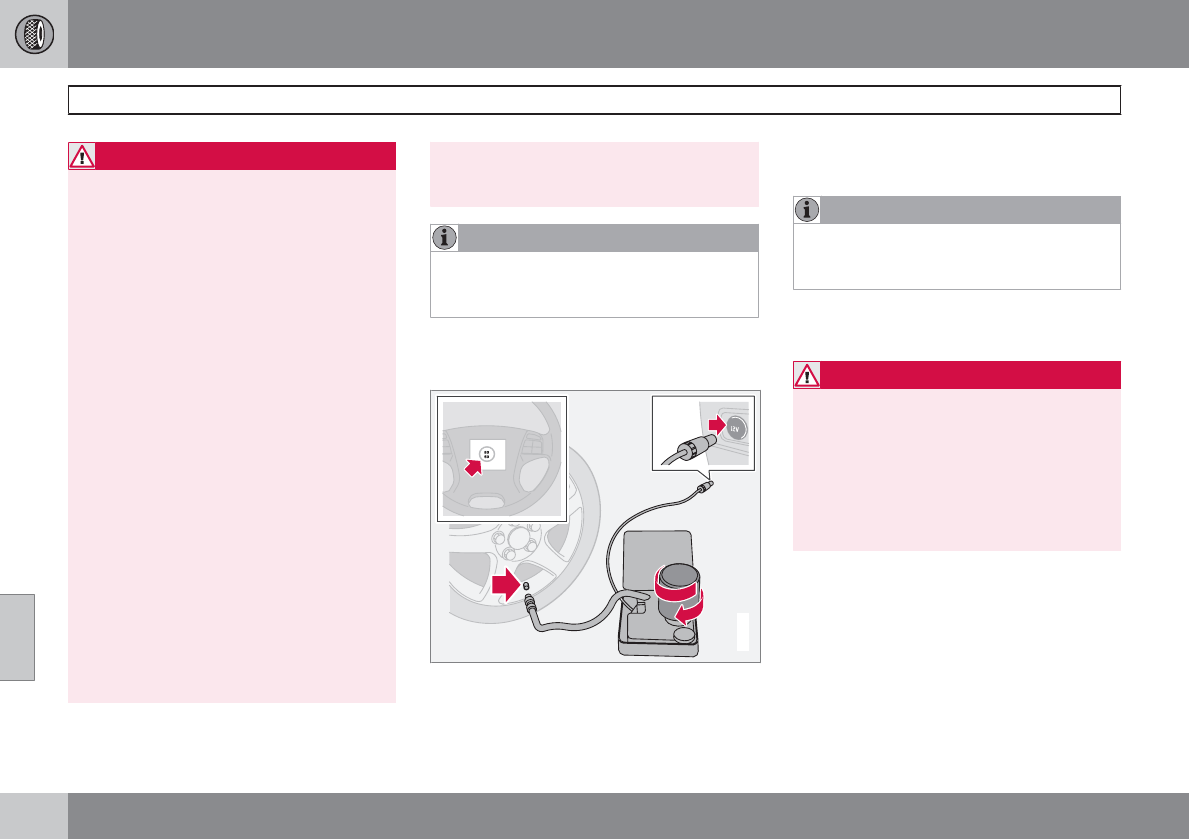
07 Wheels and tires
Tire Sealing System
07
186
WARNING
Please keep the following points in mind
when using the tire sealing system:
•
The sealing compound bottle (no. 8 in
the illustration) contains 1.2-Ethanol
and natural rubber-latex. These sub-
stances are harmful if swallowed.
•
The contents of this bottle may cause
allergic skin reactions or otherwise be
potentially harmful to the skin, the cen-
tral nervous system, and the eyes.
Precautions:
•
Keep out of reach of children.
•
Do not ingest the contents.
•
Avoid prolonged or repeated contact
with the skin.
•
Hands should be washed thoroughly
after handling.
First aid:
•
Skin: Wash affected areas of skin with
soap and water. Get medical attention
if symptoms occur.
•
Eyes: Flush with plenty of water for least
15 minutes, occasionally lifting the
upper and lower eyelids. Get medical
attention if symptoms occur.
•
Inhalation: Move the person to fresh air.
If irritation persists, get medical atten-
tion.
NOTE
Do not break the seal on the bottle. This
occurs automatically when the bottle is
screwed into the holder.
Tire sealing system–temporarily
repairing a flat tire
G019723
Temporarily repairing a flat tire is done in two
stages:
•
Stage 1: The hole is sealed by pumping
sealing compound into the tire. The car is
then driven a short distance to distribute
the sealing compound in the tire.
NOTE
Do not remove any foreign objects (nails,
etc.) from the tire before using the sealing
system.
•
Stage 2: The tire’s inflation pressure is
checked and adjusted if necessary.
WARNING
•
Never leave the tire sealing system
unattended when it is operating.
•
Keep the tire sealing system away from
children.
•
Be sure the vehicle is parked safely off
the road and away from moving traffic.
•
Apply the parking brake.
Stage 1: Sealing the hole
1. Open the cover on the tire sealing kit.
2. Peel off the speed limit sticker and affix it
to the steering wheel hub where it will be
clearly visible to the driver.


















